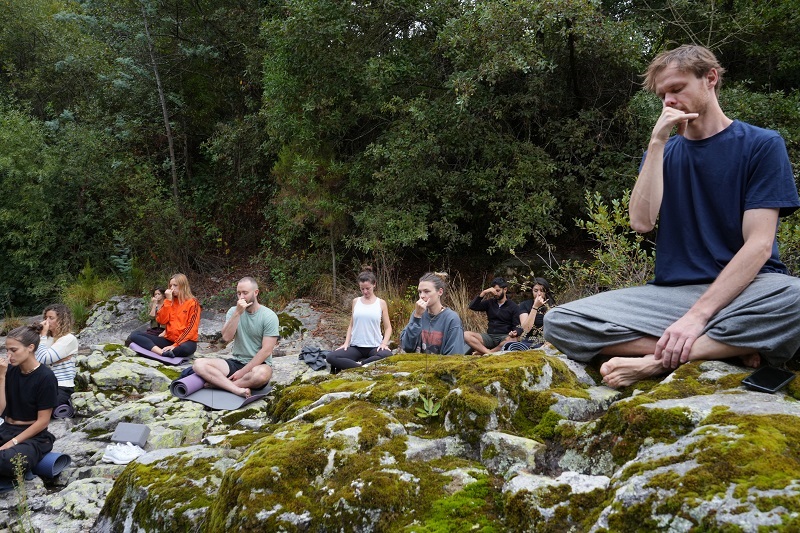
What is Breathwork?
For me, the emphasis, and with that the differentiation from functional breathing, is on the “work” part of “breathwork”. I’m not saying that all functional breathing exercises are easy in terms of their execution and sometimes they do bring up emotional difficulties. Like I said, it all lives on a spectrum.
What I mean by the “work” is the more emotional, process, side of it all. Where we step more into the unknown, not sure of what the outcome will be. Potentially we encounter some stuck tension, that could be related to a trauma. Or, by design, we could enter a more non-dual psychedelic state.
Personally I work more with “interoceptive” practices, where we go into the body, rather than take off. In a safe way, we gently explore what is alive in our nervous system, listen to what it needs and follow it.
These sessions tend to take a lot longer (45–90min) and can be a more difficult journey in terms of what is being brought up. Although sometimes nothing might happen, which is also perfectly fine. Or we simply have a very calming, relaxing, experience. It’s important to except it for what it was. The nervous system rarely takes on more than it can handle in this kind of setting.
I see these sessions as an attempt to broaden ones experiential spectrum. To “improve” tolerance to more difficult feelings and be more capable of experiencing happy/pleasurable feelings. This in itself has a massive impact on how one experiences life, the choices we make and the individuals sense of freedom and authenticity. Some might describe it as the process from “personality” to “individuality”.
Breathwork is ideally done in the presence of one or multiple space holders. It sometimes requires a lot of emotional work and readiness to engage with the sides of us that are maybe more painful. Integration is also a very important part of this work.
For this type of breathwork we often use what is called the “Conscious Connected Breath”. A continuous flow of breathing without breaks, often done through an open mouth, with an emphasis on the belly.
This is often combined with other somatic modalities, like movement and bodywork which can be very supportive. On this side of the spectrum you also tend to encounter more spiritual language, but this very much depends on your facilitator.
Proactive, conscious breathing
As you can see, proactive, conscious breathing can take many shapes and forms. No matter which type of breathing you engage with, all have their pros and cons.
So just like you want to find the right therapist or yoga practice, you want to find a type of breathing practice that feels good to you. This might take some time and openness to new experiences. So, my advice would be to follow your initial interest and go explore.
The breath is a powerful tool and I do believe there is a practice for everyone.



